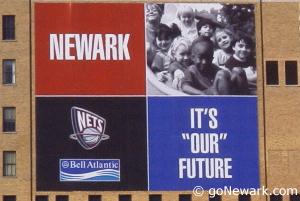 MY Newark conversations began long before I arrived there. They started months in advance as I discussed my summer plans with college friends over dining hall tables, and continued as I slowly convinced my parents to allow me to live in this city more famous for burning its neighborhoods than for re-building them.
MY Newark conversations began long before I arrived there. They started months in advance as I discussed my summer plans with college friends over dining hall tables, and continued as I slowly convinced my parents to allow me to live in this city more famous for burning its neighborhoods than for re-building them.
 I met Raymond's urban counterpart the next day in the form of a mounted Newark police officer who patrolled the park adjacent to the brand-new New Jersey Performing Arts Center (NJPAC). I sat drawing the castle-like turrets of the once-glamorous Military Park building when Officer Eddie leaned down from his horse to look at my sketch. We started to talk about Newark and he blamed the bad reputation of the downtown on the bands of homeless men like Raymond who roamed the streets after the shelters emptied every morning. He shook his head in disbelief when he told me the $180 million NJPAC was built at the center of five homeless shelters and next door to the city's main church soup kitchen.
I met Raymond's urban counterpart the next day in the form of a mounted Newark police officer who patrolled the park adjacent to the brand-new New Jersey Performing Arts Center (NJPAC). I sat drawing the castle-like turrets of the once-glamorous Military Park building when Officer Eddie leaned down from his horse to look at my sketch. We started to talk about Newark and he blamed the bad reputation of the downtown on the bands of homeless men like Raymond who roamed the streets after the shelters emptied every morning. He shook his head in disbelief when he told me the $180 million NJPAC was built at the center of five homeless shelters and next door to the city's main church soup kitchen.